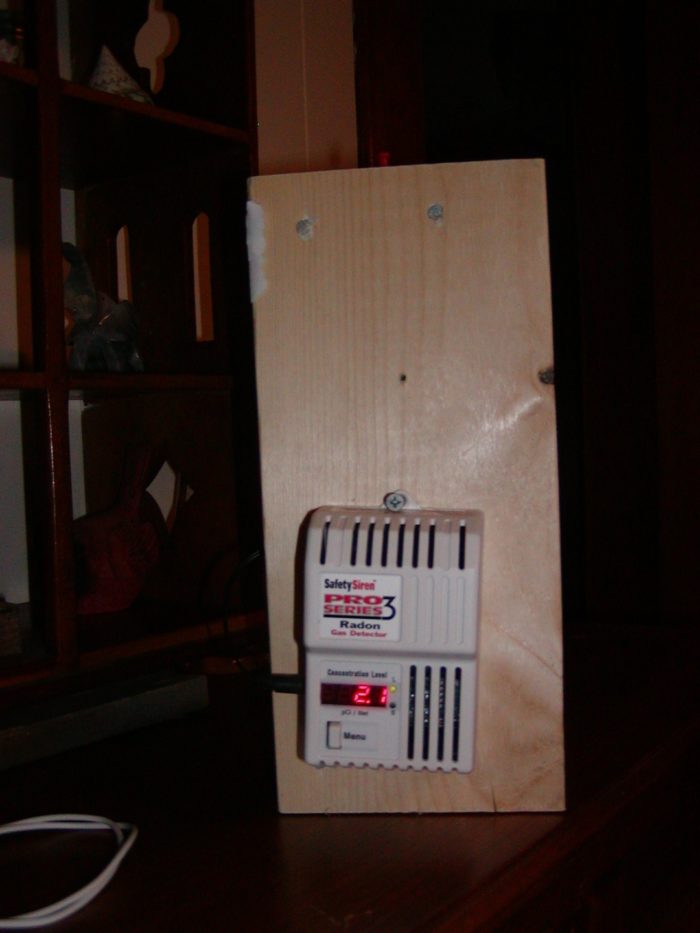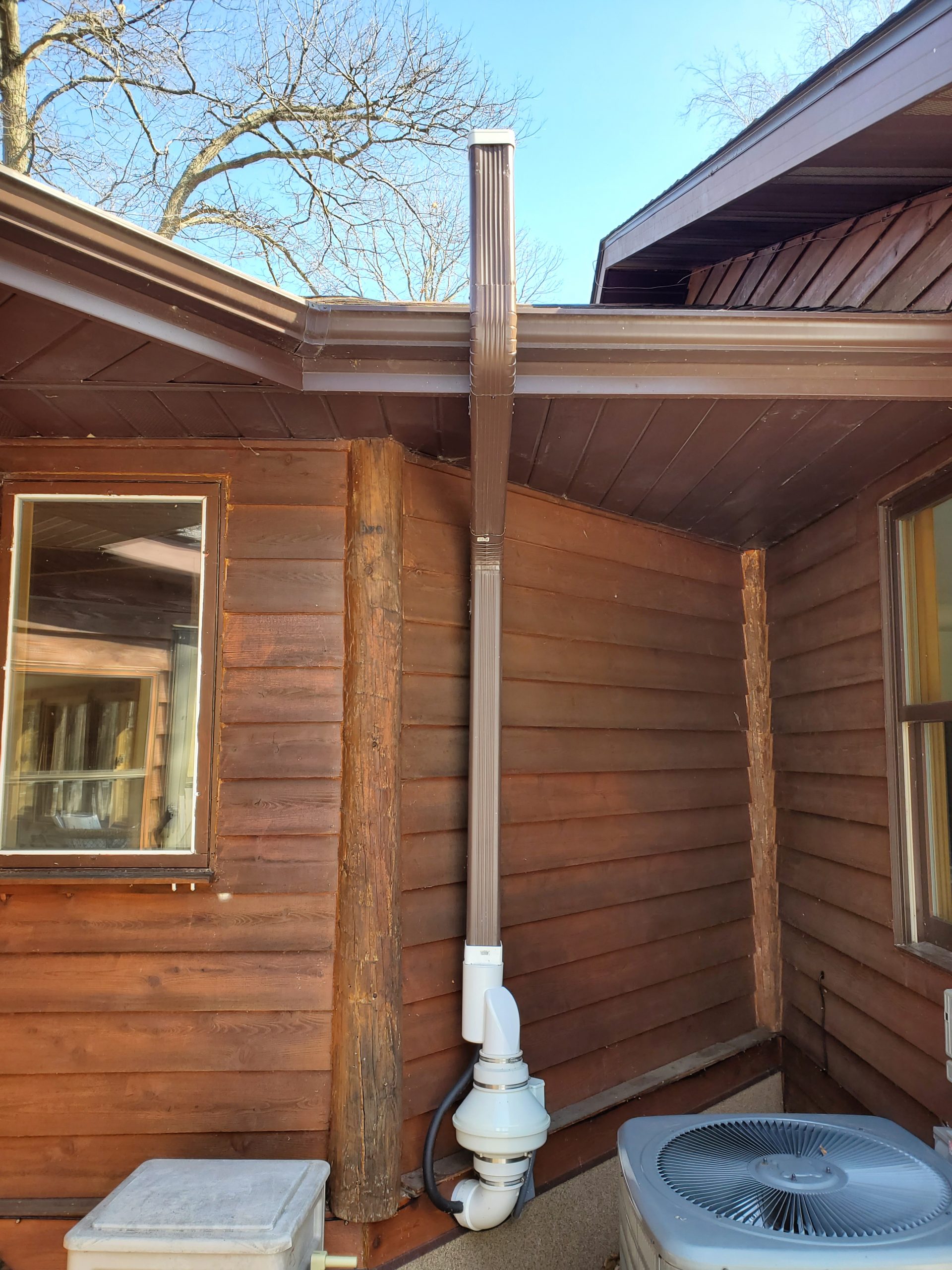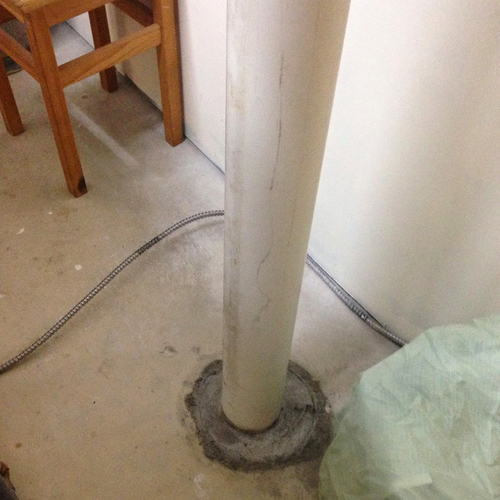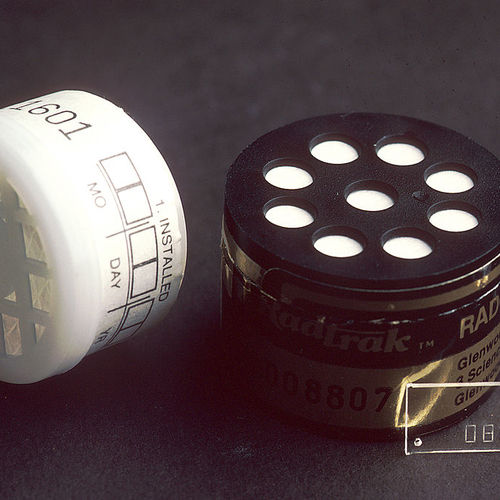
Image Credit: Peter Yost
We are always trying to avoid unintended consequences of our best efforts to improve home performance. A good example of this is radon gas and air tightness levels in homes during energy retrofits. How are the two levels related and what can we do about it if they are?
A bit of background on radon
Radon is a colorless, odorless, tasteless gas that is radioactive. It is a byproduct of the breakdown of uranium in rock or soil. As radon radioactively degrades, it gives off alpha particles, a form of ionizing radiation. Because alpha particles are “big,” they cannot pass through even the outer layers of dead skin, so they can only cause cell damage if they are ingested, typically inhaled.
Radon’s presence in homes was discovered in 1984 in Pennsylvania when a nuclear power industry worker’s dosimeter badge was maxing out, and not from his work at the nuclear plant. They eventually traced the problem back to the employee’s basement, where the concentrations of radon gas were surprisingly high.
Weekly Newsletter
Get building science and energy efficiency advice, plus special offers, in your inbox.
There is never a “safe” level of exposure to radiation; for radon in homes EPA has set the action level at 4 pico-curies per liter (pCiL). Background levels outdoors average about .75 pCiL, so the action level is about 5 times greater than background levels. The 4 pCiL threshold for indoor radon is based on a combination of extrapolated health risk and practical mitigation.
NOTE: You might see other units of measurement for radon levels; the Canadians, for example, often use becquerels per cubic meter (Bqm-3). 4 pCiL equals about 150 Bqm-3.
You don’t have to go very far or deep on the internet to find skeptics of the health risks that radon in homes presents. It is not easy or straightforward to calculate long-term low-level exposure hazard in homes from studies such as those on miners. But most health experts, nationally and internationally, agree that since radon mitigation is relatively easy in homes, particularly in new homes, the risk justifies the expense of radon mitigation. It gets a little more complicated for existing homes because mitigation is generally much more costly.
Airtightness and radon levels
There are five main factors that drive radon levels in homes:
- radon concentrations in soil gas around the home;
- the pressure difference between the inside of the home and the soil around it;
- the air exchange rate of the home;
- the moisture content of soil around the home (more moisture means less radon gas movement);
- entry pathways, their number and size.
When you make a home more airtight, the good news is that you could be reducing the entry pathways and reducing the pressure differential between the soil and home. The bad news is that you are also significantly reducing the air exchange rate in the home. So, what really happens?
The short answer is: it depends. One study (“Assessment of the Effects of Weatherization on Residential Radon Levels” EPA600//SR-94/002) showed inconsistent relationships between air tightness and radon levels. In my own home, air sealing and insulating throughout the home increased radon levels in the basement significantly but purposeful pressure management has kept living space radon readings consistently below 3 pCiL. There is research being conducted by Oak Ridge National Laboratory (ORNL) and the Energy Center of Wisconsin (ECW) on this topic, but results are not yet available. In general, if you look at the list of the five factors above and figure that energy efficiency upgrades affect three of the five, it is not surprising that the impact on radon levels of energy upgrades may be very case-specific.
Measuring Radon Levels
Quite often you will hear that radon tests in individual homes are unnecessary because EPA radon zone maps show low levels of radon or neighbors report low levels from testing in their own homes. Unfortunately, neither the county level zone maps or what surrounding homes are experiencing says much about individual homes and their radon levels.
So, with all this uncertainty, and maybe really because of it, we should be measuring radon levels in homes in which we are improving energy efficiency. You just have to test.
There are quite a few options for testing radon in homes. I like to break them down into three groups: short term, long term, and continuous electronic.
Short term testing is typically 2 – 7 days and either activated charcoal-based or electret ion. These are relatively inexpensive tests that you can generally get at a hardware store. The advantage of this test type is that you get quick results.
Long term tests tend to be 3- 12 months and based on alpha particle tracking. Many states supply this type of test kit to homeowners. The disadvantage with this type of test is that you have to wait a long time for results.
Continuous electronic monitors tend to work through an ionization chamber with readouts that give you a running average.
In general, these radon tests are pretty accurate with least confidence in the short term testing because radon levels can vary pretty widely over time. I have run all three types of radon tests in my own home and I have generally found quite reasonable agreement.
Radon mitigation techniques
Radon mitigation relies on two primary approaches: depressurization under the basement or first floor slab or dilution. There is a great EPA table listing radon mitigation techniques, installation costs, and operating costs. In new homes, installing a passive or active system that depressurizes the slab is only about $350; but just about any of the techniques in existing homes can run into thousands of dollars.
Radon and Real Estate
This is tricky. Most states and the EPA protocol do not require radon tests as part of real estate transactions, but do require notification to potential buyers if testing has been done previously. Bit of a “don’t ask, don’t tell” policy; except that EPA has a fairly aggressive education/dissemination program to encourage radon resolution as part of real estate transactions. See the EPA “Home Buyers and Sellers Guide to Radon.”
Summary
It is certainly tempting to avoid this whole issue in the long list of tangled and vexing interactions we need to consider in green buildings. But in the long run, do enough research and testing to eliminate the concern or test after your work to determine what might need to be done. You would not think of skipping a worst-case CAZ test because you were afraid of the cost implications of combustion safety; think of radon testing in the same way.















3 Comments
Radon
Amy & Peter,
You present the information clear and succinctly. Thanks. And your being mentioned and linked from today's Fine Homebuilding newsletter shows your work and expertise have merit and should be listened to. I've bookmarked your web site. Thanks for the Radon info. If you ever want a study case, I have a 104 yr old farm house in downtown Seward, testing just below 4 with cracking up brick foundation and slab floor that I'm considering complete replacement. Just send me a note.
G Rolf
Seward, NE
Page not displaying properly
Every time I click on the link to see the EPA table listing radon mitigation techniques and costs, I get a page that is partially blocked on the left side with a long and wide blue box, so I can't read anything here properly. I've tried pasting the link into another browser and the same thing happens. It seems to be affecting every page on EPS's website no matter what browser I use.
Radon gas.
There are areas of granite where radon gas is prevalent and there are areas of gravel, clay like river flood plains where there is no radon gas.
The installation of a radon proof plastic sheet covering the entire base of a home is all that is required to stop radon gas entering a home. As mentioned above, radon gas outside the home is subject to the prevailing wind and is of no importance.
Installing a basement in a radon gas prone area is not a good idea as radon gas tends to build up in cupboards and corners where there is little air movement it then makes the dust radio active. Young children tend to play on the floor and it is these that end up with lung cancer.
Thousands of people die of lung cancer every year, to be fair anyone who works underground and is exposed to radon gas is a likely victim, basement users included.
Log in or create an account to post a comment.
Sign up Log in